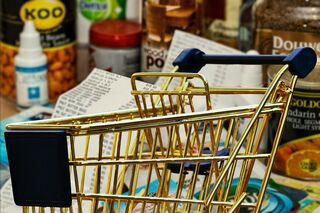Happiness
Can’t Buy Happiness
Does Black Friday make you nervous about your acquiring impulses?
Posted November 8, 2020

Impulse or compulsive buying can take many forms and affects individuals who look to shopping to re-stabilize their mood, provide relief from their lives, or deal with compulsions with self-soothing rituals. Today, the increase in and convenience of online shopping options can compound the compulsions for many individuals. In this blog post, I will discuss strategies you can use to make conscious choices about what and how much you purchase or acquire. If online shopping is a particular vulnerability, I recommend that you check out my earlier blog post, "Online Shopping and Hoarding Disorder," for tools and intervention strategies geared specifically to online shopping concerns.
The conscious acquiring process is a step-by-step checklist to turn back impulse buying. This is a harm-reduction strategy I developed and have used with many clients who struggle with compulsive acquiring.
This process is meant to :
1) Slow you down.
2) Break the rush of excitement and urgency that fuels impulse acquisition.
3) Support you to develop other options and make decisions you won’t regret later.
4) Give you time to rationally consider other alternatives without the influence of the roller coaster rush of adrenaline, serotonin, or dopamine coursing through your body.
5) Help you avoid digging the rut of hoarding even deeper.

Try to take a break from shopping while you learn, practice, and integrate self-regulating strategies to make a plan and follow the plan most of the time. Period.
1) Plan not to go to stores other than for groceries, unless groceries are an issue for you. Do this by delegating purchases to family and close friends who are supportive of your hoarding challenges and goals. Only delegate to those who are 100% behind you, so that you do not have to feel defective, apologetic, or indebted for asking.
2) Even when grocery shopping, start practicing shopping only from a list. Do your best to stick to that list by telling yourself the other interesting items you see will still be there the next time and can be added to the next proactive list.
3) If, for an unavoidable reason, you must do non-grocery shopping, commit to making a list and buying only what is on that list. Before you go through the checkout line, pull over to a quiet spot, look at your list, look at your shopping cart, and if there is anything in the cart that's not on your list, try to put it back.
4) Refer to the “Bring home or let go?" checklist available on www.hoarding.ca to decide your best choice today. Even if an item looks like a good purchase, you can always make that same purchase tomorrow with a new list.
5) If, for some reason, you absolutely cannot return the next day — and if the item is some basic need like bread, milk, medications, etc.— leave the basket or the cart outside the restrooms or near the checkout and do the following:
- Leave the building, giving yourself an opportunity to change your state of mind, or go to a quiet place like the restroom, look in the mirror, ask yourself if excess buying is what you need to do today. Sit and do relaxation breathing to de-stress. Centre yourself. Ask yourself if the additional items are truly needs or wants? As inconvenient as this sounds, it is an important step to interrupt the in-the-moment impulse decision-making process.
- If, and only if, you decide that the items are actual needs, add them to your list, go back into the store and make your purchases, knowing this is the best decision you could make today.
- If any of the items are actually wants, make note of them for consideration as possible needs for future shopping visits, but remind yourself they are not needs today, and so your best choice is not to buy them today.
- Remind yourself that these items or something similar will be available later.
- If they are on sale, they are not a good deal if you are buying them on credit or if you are using cash that could instead give you a safety net against future unexpected expenses.
This method is not designed nor advisable for expensive items or items that you are particularly and strongly attracted to. In these cases:
1) Remove the item from your cart now.
2) If you can't make yourself remove the item from your cart, be sure to go someplace quiet like the restroom, look in the mirror and ask yourself, “What am I doing? Does this choice move me forward or set me back on the goals I'm working on?”
3) Do your best to go home.
4) Call a trusted third party to discuss your reasons for wanting to buy the item(s).
5) Complete a pros and cons list of buying vs. not buying.
6) Sleep on it and wait for the next day.
7) Make a new list and buy from that if you still believe the items are your best choice.
8) Slow yourself down. Make your choice consciously.
9) Either return and make your purchase(s), or if you recognize that the item is an impulse buy and you resisted buying it, go look yourself in the mirror and say “I did it! I just took a huge step forward to the life I want and deserve.”
Most of all, be very, very proud of yourself!




